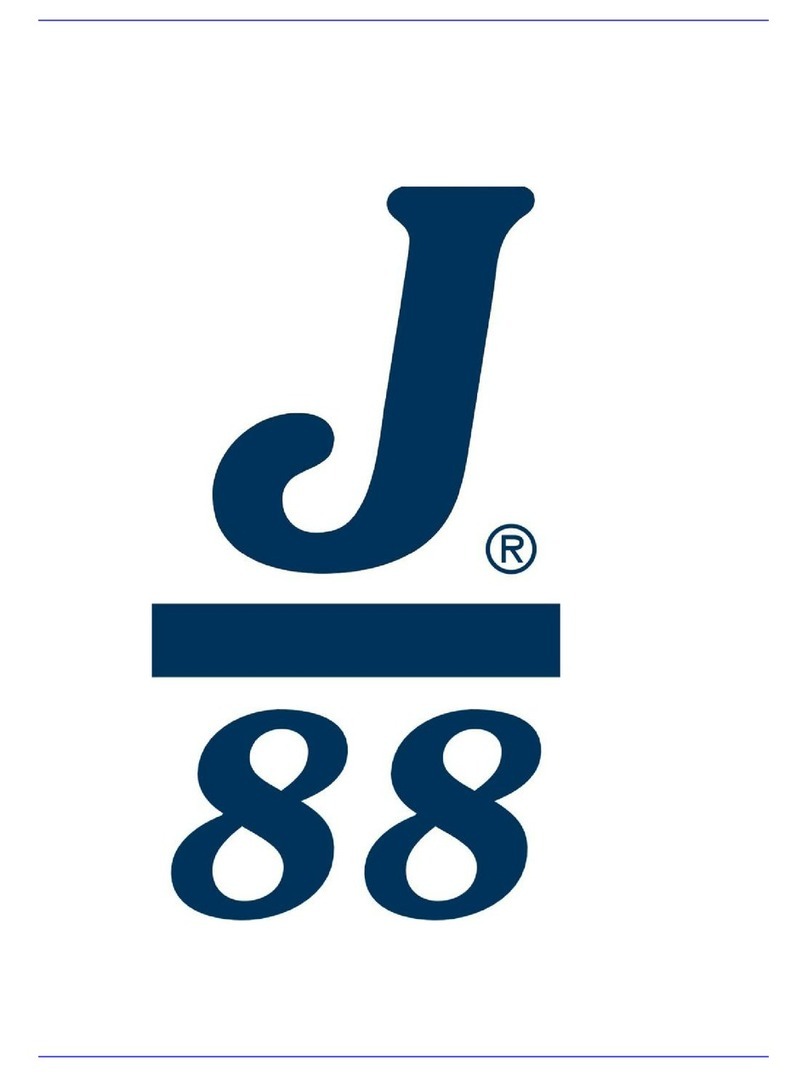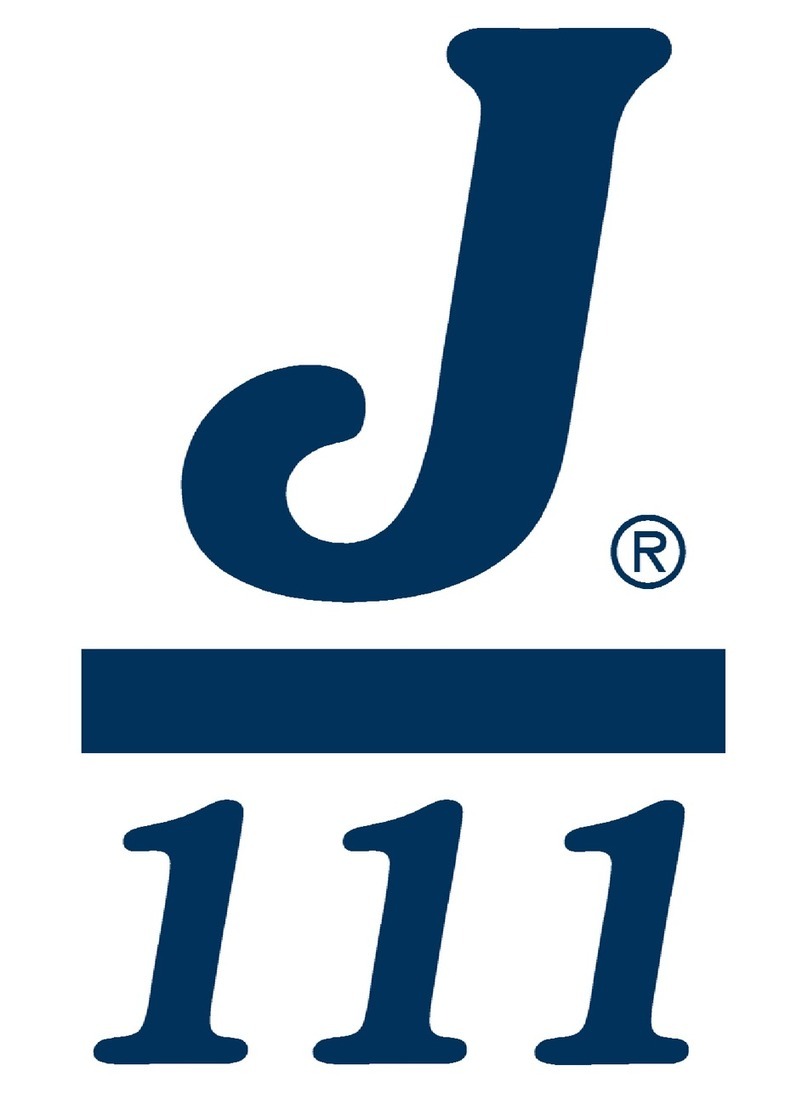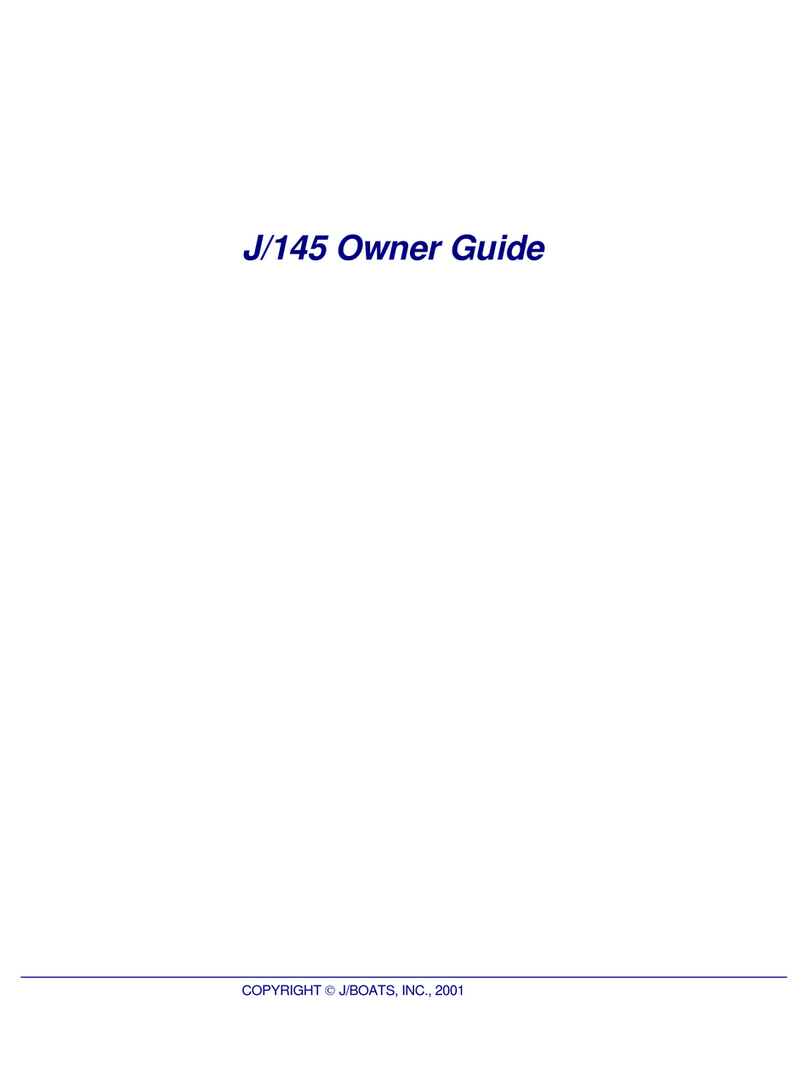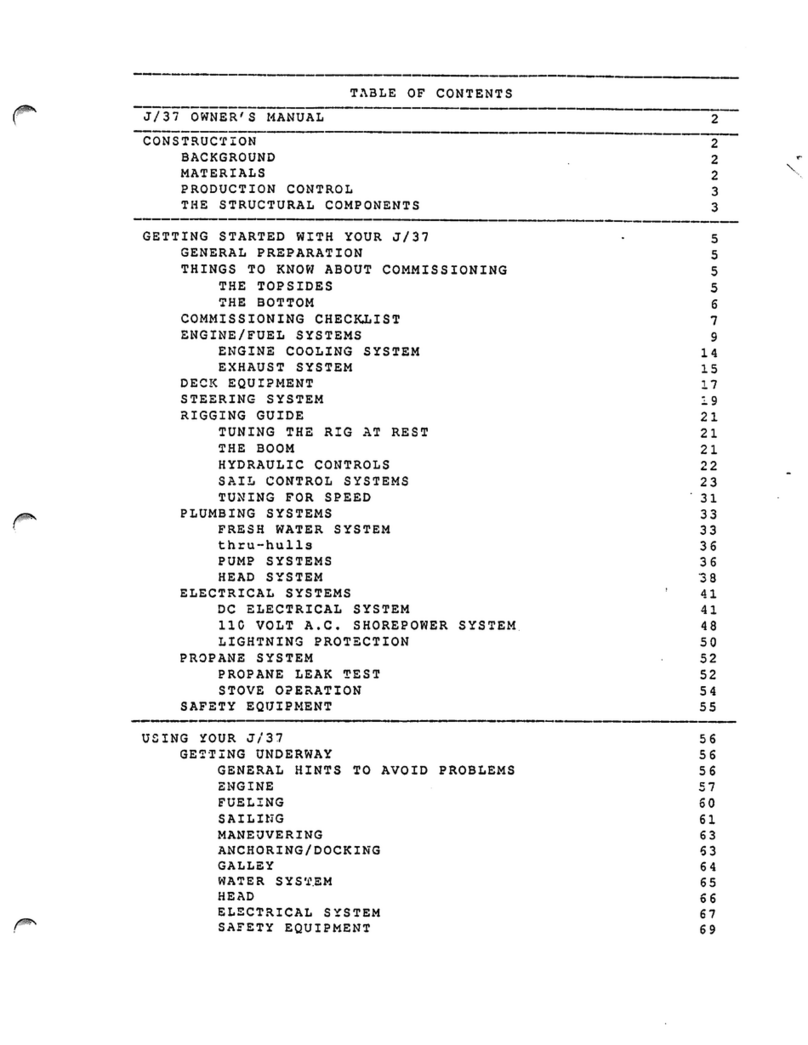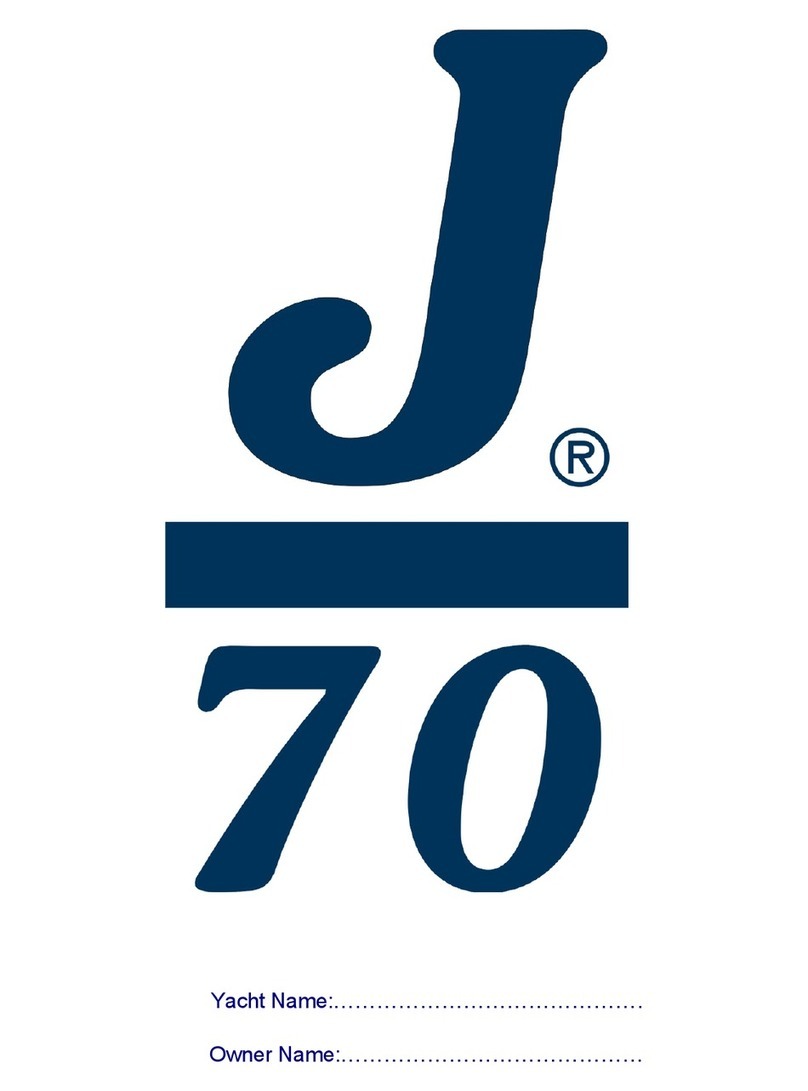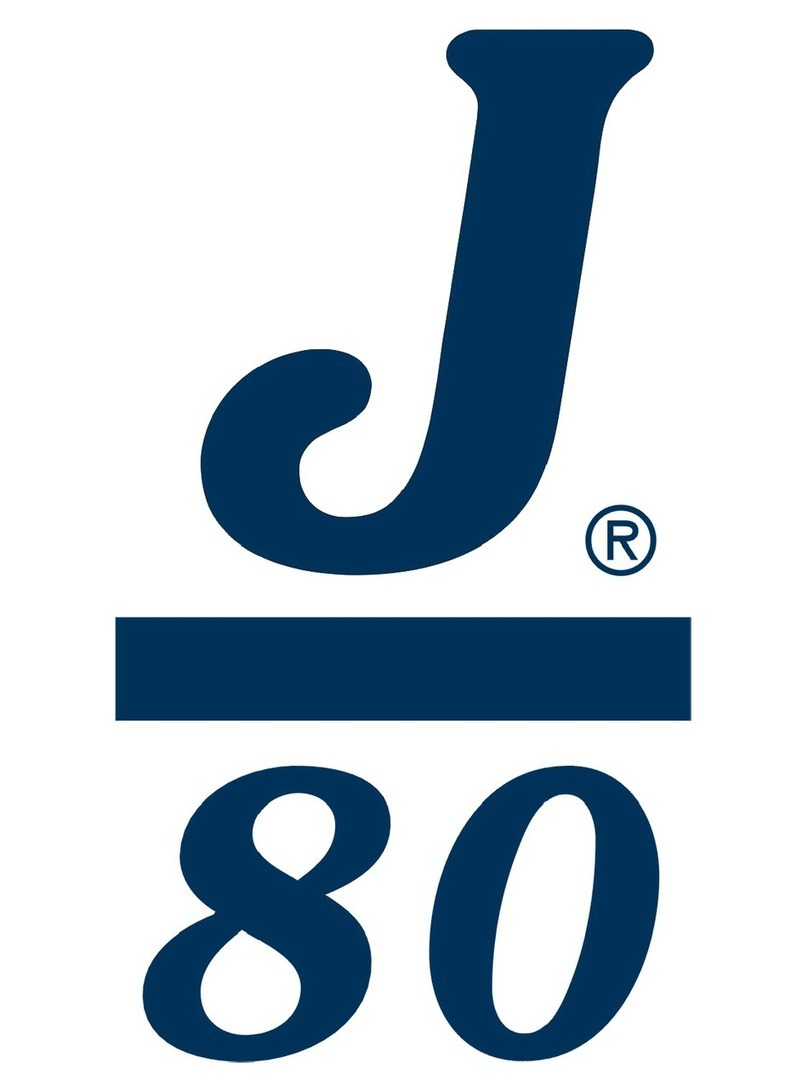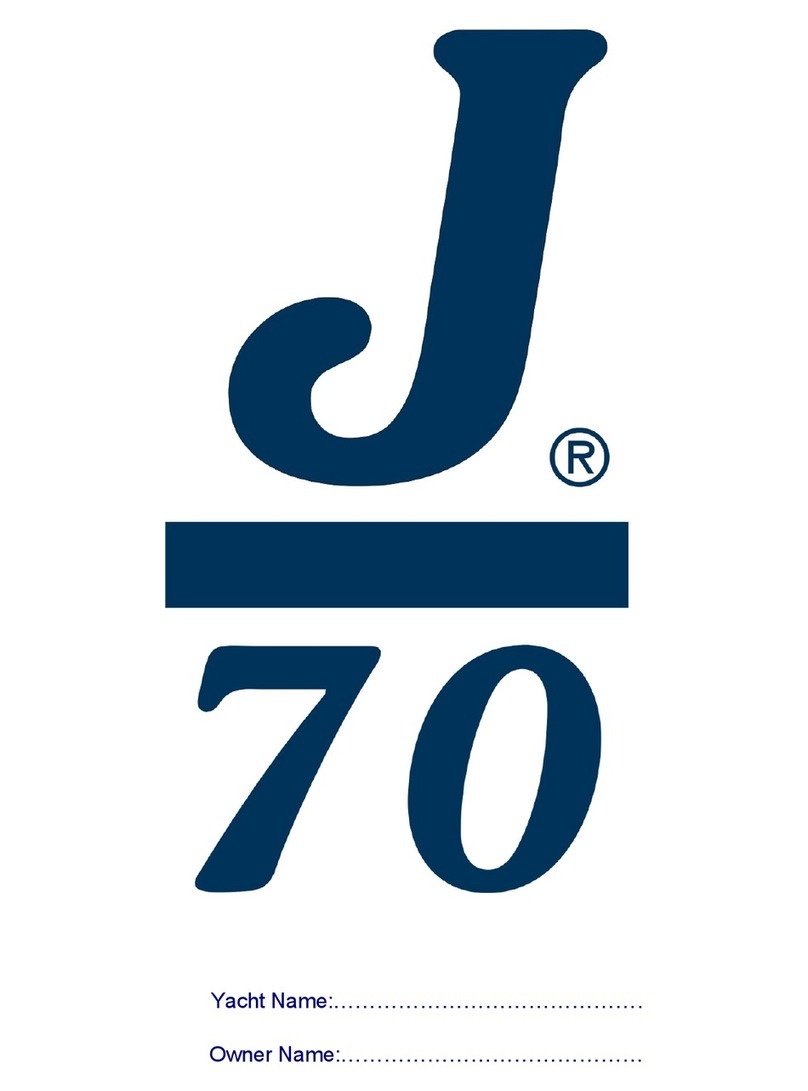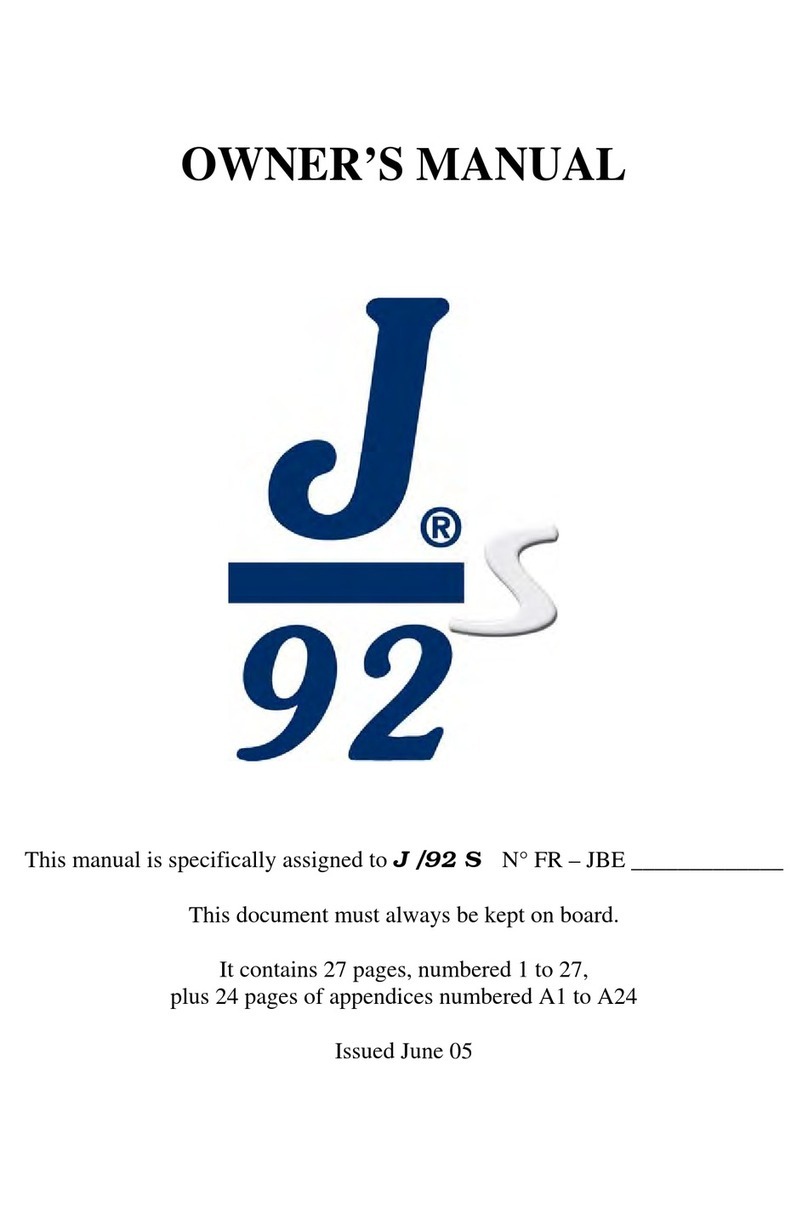
J/109 OWNER GUIDE
3
Table of Contents
Introduction........................................................................................................................................................................ 4
Specifications.................................................................................................................................................................... 5
Important Contacts........................................................................................................................................................... 6
Commissioning Checklist ............................................................................................................................................... 7
Getting Started With Your J/109...................................................................................................................................... 8
Diagrams, Layouts, & Schematics............................................................................................................................... 12
Deck Hardware Layout ................................................................................................................................................. 12
Mainsheet & Traveler Diagram..................................................................................................................................... 13
Adjustable Genoa Leads............................................................................................................................................... 14
Halyard Layout............................................................................................................................................................... 15
Reefing System Diagram.............................................................................................................................................. 16
Chainplate Tie-Rod System.......................................................................................................................................... 17
Steering System ............................................................................................................................................................ 18
Engine Layout................................................................................................................................................................ 19
Exhaust System Layout ................................................................................................................................................ 20
Fuel System Layout....................................................................................................................................................... 21
Thru-Hull Locations ....................................................................................................................................................... 22
Fresh Water System Layout......................................................................................................................................... 23
Sump Layout ................................................................................................................................................................. 24
Bilge Pump Layout ........................................................................................................................................................ 25
Main AC/DC Distribution Panel..................................................................................................................................... 26
DC Component Layout ................................................................................................................................................. 27
DC Wiring Schematic.................................................................................................................................................... 28
DC Battery Monitor........................................................................................................................................................ 29
AC Component Layout.................................................................................................................................................. 30
Galvanic Isolator............................................................................................................................................................ 31
Propane System Layout................................................................................................................................................ 32
Bonding System ............................................................................................................................................................ 33
Tuning The Rig ................................................................................................................................................................ 34
Engine System ................................................................................................................................................................ 35
Sail Drive........................................................................................................................................................................ 35
Fuel System................................................................................................................................................................... 35
Engine Cooling System................................................................................................................................................. 36
Exhaust System ............................................................................................................................................................ 36
Engine Safety Precautions............................................................................................................................................ 37
Fueling ........................................................................................................................................................................... 38
Engine Maintenance ..................................................................................................................................................... 38
Plumbing Systems.......................................................................................................................................................... 39
Fresh Water System ..................................................................................................................................................... 39
Thru-Hulls ...................................................................................................................................................................... 39
Pump Systems .............................................................................................................................................................. 39
Head System................................................................................................................................................................. 40
Electrical System............................................................................................................................................................. 40
DC Electrical System .................................................................................................................................................... 40
110 VAC Shorepower System ...................................................................................................................................... 41
Galley Stove LPG System.............................................................................................................................................. 42
Safety ................................................................................................................................................................................ 43
Maintenance Tips............................................................................................................................................................ 44
Annual Maintenance Checklist ..................................................................................................................................... 46
Storage Tips..................................................................................................................................................................... 47
TPI Composites Limited Warranty .............................................................See Warranty Package Included with Boat
